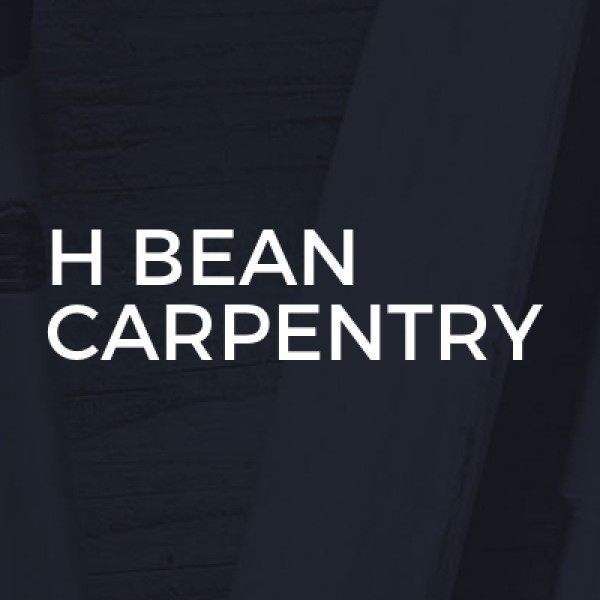Loft Boarding in Hackney
Welcome to Crown Roofing And Building, your trusted partner for all your building and renovation needs in New Barnet and across Barnet, L... read more »
Welcome to SAF Construction Consultant, your go-to experts for all construction needs in South Tottenham and the wider Haringey, London a... read more »
Welcome to H Bean Carpentry, your go-to experts for all things carpentry and plastering in the heart of Blackfen. Proudly serving the Bex... read more »
Welcome to Rems Building Services Ltd, your trusted p... read more »
Welcome to O'Donovan Construction Management Ltd, you... read more »
Welcome t... read more »
Welcome to Animus Construction, your trusted partner... read more »
Welcome to Madeira Construction Ltd, your trusted bui... read more »
Welcome to Brooklyn Block Paving, your trusted trades... read more »
A.N Build Ltd is a reputable constru... read more »
Welcome to TEAL CO Windows and Doors Ltd, a distingui... read more »
Welcome to Addspace Building Ltd, your trusted builde... read more »
Welcome to J Sutton Building Services, your go-to exp... read more »
Ving Building Solutions Limited is y... read more »
Kaz Star Builders Ltd: Premier Builders in Ea... read more »
Welcome to Upmost Lofts, your premier choice for top-... read more »
Welcome to A To Z Builders, your go-to experts for al... read more »
Welcome to Hall and Sons Ltd, your premier choice for... read more »
Welcome to G&J Builders, your trusted partner for lof... read more »
Search Loft Boarding in places nearby
Understanding Loft Boarding in Hackney
Loft boarding in Hackney is becoming increasingly popular among homeowners looking to maximise their living space. This process involves installing a floor in your loft, making it a functional area for storage or even additional living space. With Hackney's unique blend of historical and modern architecture, loft boarding offers a practical solution to space constraints without altering the external appearance of your home.
The Benefits of Loft Boarding
Loft boarding offers numerous benefits, making it an attractive option for many Hackney residents. Firstly, it provides additional storage space, which is invaluable in urban areas where space is at a premium. Secondly, it can increase the value of your home by making the loft a usable space. Additionally, it can improve the energy efficiency of your home by providing an extra layer of insulation.
Increased Storage Capacity
One of the primary reasons homeowners opt for loft boarding is to increase storage capacity. By boarding your loft, you can store items that are not frequently used, such as seasonal decorations or old furniture, freeing up space in the main living areas.
Enhanced Property Value
Loft boarding can significantly enhance the value of your property. A well-boarded loft can be marketed as a versatile space, appealing to potential buyers who value additional storage or the possibility of converting the loft into a living area.
Improved Energy Efficiency
By boarding your loft, you can also improve your home's energy efficiency. The boards act as an additional layer of insulation, helping to retain heat during the winter months and keep your home cooler in the summer.
Considerations Before Boarding Your Loft
Before embarking on a loft boarding project in Hackney, there are several considerations to keep in mind. These include assessing the structural integrity of your loft, understanding building regulations, and determining the purpose of the boarded space.
Structural Integrity
It's crucial to assess the structural integrity of your loft before boarding. This involves checking the strength of the joists and ensuring they can support the additional weight of the boards and any items stored on them. Consulting with a structural engineer may be necessary to ensure safety and compliance with building standards.
Building Regulations
Understanding and adhering to building regulations is essential when boarding your loft. In Hackney, specific regulations may apply, especially if you plan to use the loft as a habitable space. It's important to consult with local authorities or a professional to ensure compliance.
Purpose of the Boarded Space
Determining the purpose of your boarded loft space will influence the materials and design choices. If the space is intended for storage, basic boarding may suffice. However, if you plan to use it as a living area, additional considerations such as lighting, ventilation, and insulation will be necessary.
Choosing the Right Materials for Loft Boarding
Selecting the appropriate materials is a critical step in the loft boarding process. The choice of materials will affect the durability, safety, and functionality of the boarded space.
Types of Boarding Materials
Common materials used for loft boarding include chipboard, plywood, and tongue-and-groove boards. Each material has its advantages and disadvantages, so it's important to choose one that suits your specific needs and budget.
Insulation Considerations
Incorporating insulation into your loft boarding project can enhance energy efficiency. Insulation materials such as fibreglass or rigid foam can be installed beneath the boards to improve thermal performance.
Safety and Durability
Safety and durability are paramount when selecting materials for loft boarding. Ensure that the materials are fire-resistant and can withstand the weight of stored items. Additionally, consider the longevity of the materials to avoid frequent replacements.
Hiring Professionals for Loft Boarding in Hackney
While some homeowners may choose to undertake loft boarding as a DIY project, hiring professionals can ensure a high-quality finish and compliance with regulations. Professional loft boarding companies in Hackney offer expertise and experience, making the process smoother and more efficient.
Benefits of Professional Installation
Professional installation offers several benefits, including expert advice on design and materials, adherence to safety standards, and a warranty on the work completed. Professionals can also handle any unforeseen challenges that may arise during the project.
Finding the Right Contractor
When selecting a contractor for loft boarding in Hackney, it's important to research and compare different companies. Look for contractors with positive reviews, relevant experience, and appropriate certifications. Requesting quotes from multiple contractors can also help you find a competitive price.
Cost Considerations
The cost of professional loft boarding can vary depending on factors such as the size of the loft, the materials used, and the complexity of the project. It's important to budget accordingly and discuss all costs upfront with your chosen contractor to avoid unexpected expenses.
DIY Loft Boarding: A Step-by-Step Guide
For those who prefer a hands-on approach, DIY loft boarding can be a rewarding project. However, it's important to approach it with caution and ensure that all safety and structural considerations are addressed.
Planning and Preparation
Before starting a DIY loft boarding project, thorough planning and preparation are essential. This includes measuring the loft space, selecting appropriate materials, and gathering the necessary tools. It's also important to familiarise yourself with any relevant building regulations.
Installing the Loft Boards
The installation process involves laying the boards across the joists, ensuring they are securely fixed in place. It's important to leave gaps for ventilation and access to any electrical or plumbing systems. Take care to avoid damaging any existing insulation during the installation.
Finishing Touches
Once the boards are installed, consider adding finishing touches such as lighting or shelving to enhance the functionality of the space. Ensure that all safety measures are in place, such as secure access ladders and adequate lighting.
Common Challenges and Solutions in Loft Boarding
Loft boarding can present several challenges, but with careful planning and problem-solving, these can be overcome. Common challenges include limited access, uneven surfaces, and maintaining adequate insulation.
Limited Access
Limited access to the loft can make boarding difficult. Installing a loft ladder or hatch can improve accessibility and make the boarding process easier. It's important to choose a ladder that is sturdy and easy to use.
Uneven Surfaces
Uneven surfaces can complicate the installation of loft boards. Using adjustable supports or packing materials can help level the surface and ensure a stable base for the boards.
Maintaining Insulation
Maintaining adequate insulation while boarding the loft is crucial for energy efficiency. Ensure that insulation materials are not compressed or damaged during the installation process. Consider using raised boarding systems to preserve insulation depth.
Frequently Asked Questions About Loft Boarding in Hackney
- Is planning permission required for loft boarding in Hackney? Generally, planning permission is not required for loft boarding unless you are making structural changes or converting the loft into a habitable space.
- How much does loft boarding cost in Hackney? The cost can vary widely depending on the size of the loft and the materials used. On average, prices range from £500 to £1500 for professional installation.
- Can I board my loft myself? Yes, DIY loft boarding is possible, but it requires careful planning and adherence to safety standards. Consider consulting a professional if you are unsure.
- What materials are best for loft boarding? Common materials include chipboard, plywood, and tongue-and-groove boards. The best choice depends on your budget and the intended use of the space.
- How long does it take to board a loft? The time required can vary, but most loft boarding projects can be completed in one to three days, depending on the size and complexity.
- Will loft boarding affect my home insurance? It's important to inform your insurance provider of any changes to your home, including loft boarding, to ensure your policy remains valid.
Final Thoughts on Loft Boarding in Hackney
Loft boarding in Hackney offers a practical and cost-effective solution for homeowners looking to maximise their living space. Whether you choose to hire professionals or embark on a DIY project, careful planning and consideration of safety and structural factors are essential. With the right approach, loft boarding can enhance your home's functionality, energy efficiency, and value, making it a worthwhile investment for any Hackney resident.
Send a message







